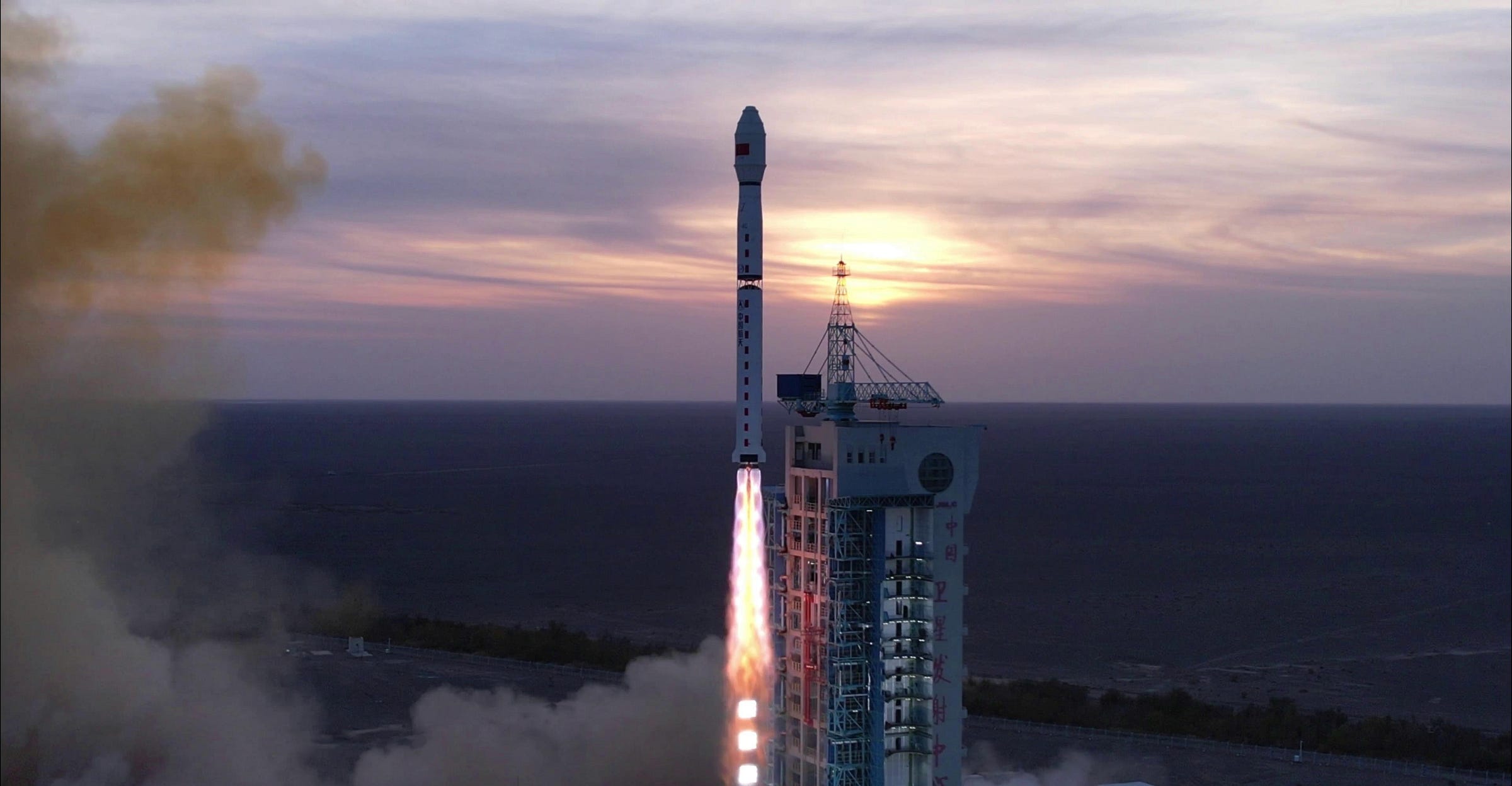More SAR imaging capabilities [Long March 4C Y59]
The fifth Gaofen-12 satellite was sent into orbit atop of a Long March 4C.
On October 16th at 07:45 am China Standard Time, or at 23:45 pm Universal Coordinated Time on October 15th, a Long March 4C blasted off from Launch Area 4 at the Jiuquan Satellite Launch Center. After entering sun-synchronous orbit, the Gaofen-12 05 satellite was released from the vehicle’s third-stage.
The main use of Gaofen-12 05 will reportedly be land surveying, urban planning, road network design, crop yield estimation, and disaster relief. This is also the fifth Gaofen-12 satellite to be launched, following the first in November 2019, the second in March 2021, a third in June 2022, and the fourth in August 2023.
All five of these satellites utilize synthetic aperture radar imaging to observe the Earth below in any weather scenario at any time of day. Imaging resolution is also believed to be under a meter.
Following payload separation, Gaofen-12 05 was tracked to a 586 by 599-kilometer 97.9-degree orbit.
Like the previous launch from the Shanghai Academy of Space Technology, which occurred almost half a day earlier, emphasis was placed on treating this launch as the first. With the academy stating:
“During the execution of the test mission, the team treats every time as the first time, collectively learns the documents before the operation, carefully compares the data during the test, and carefully filled in the form after confirmation. The launch site file of the Gaofen-12 05 satellite includes more than 50 data packet documents, more than 200 launch site procedures, and more than 4,000 image records, which is the crystallization of the test team's devotion to wisdom.”
If there are any problems with this translation please reach out and correct me.
This was the 540th launch of a Long March rocket overall, the 55th launch of a Long March 4C, and the 221st Long March vehicle launch from the Shanghai Academy of Spaceflight Technology, as well as the 49th launch from China this year.
Liftoff GIF via 北京蓝龙 on Weibo.
Check out the previous Long March 4C launch
New Hardware, New Observations, and New Test Firings! [15/5/2024]
This article was originally posted on May 16th 2024 on Ko-fi.
What is the Long March 4C?
This section is for those less familiar with China's Long March series of launch vehicles.
The Long March 4C is another older generation low Earth and sun-synchronous orbit workhorse of the Shanghai Academy of Spaceflight Technology. All three stages of the rocket burn Dinitrogen Tetroxide and Unsymmetrical Dimethylhydrazine, with the third-stage capable of engine restart.
The payload capacity of the launch vehicle is currently as follows:
4,200 kilograms to low Earth orbit
2,800 kilograms to a sun-synchronous orbit
1,500 kilograms to a geostationary transfer orbit
The first-stage is powered by four YF-21C engines, which generate 302 tons of thrust burning Dinitrogen Tetroxide and Unsymmetrical Dimethylhydrazine. The second-stage is powered by a single YF-22C engine and four YF-23C verniers that generate 80 tons of thrust while also burning Dinitrogen Tetroxide and Unsymmetrical Dimethylhydrazine. The third-stage is propelled by two YF-40A engines that provide 10 tons of thrust by once again burning Dinitrogen Tetroxide and Unsymmetrical Dimethylhydrazine.
On the launch pad, the Long March 4C is 45.9 meters tall and weighs 249,200 kilograms when fully fuelled. The first and second-stage have a diameter of 3.35 meters, while the third-stage has a diameter of 2.9 meters, and a fairing diameter of 3.8 meters.
So far the Long March 4C has flown from all three inland launch sites, the Jiuquan Satellite Launch Center, the Taiyuan Satellite Launch Center, and the Xichang Satellite Launch Center.






![New Hardware, New Observations, and New Test Firings! [15/5/2024]](https://substackcdn.com/image/fetch/$s_!JgmH!,w_1300,h_650,c_fill,f_auto,q_auto:good,fl_progressive:steep,g_auto/https%3A%2F%2Fsubstack-post-media.s3.amazonaws.com%2Fpublic%2Fimages%2F86cf5267-9009-438c-a199-7ccc524a2069_1999x1124.webp)
